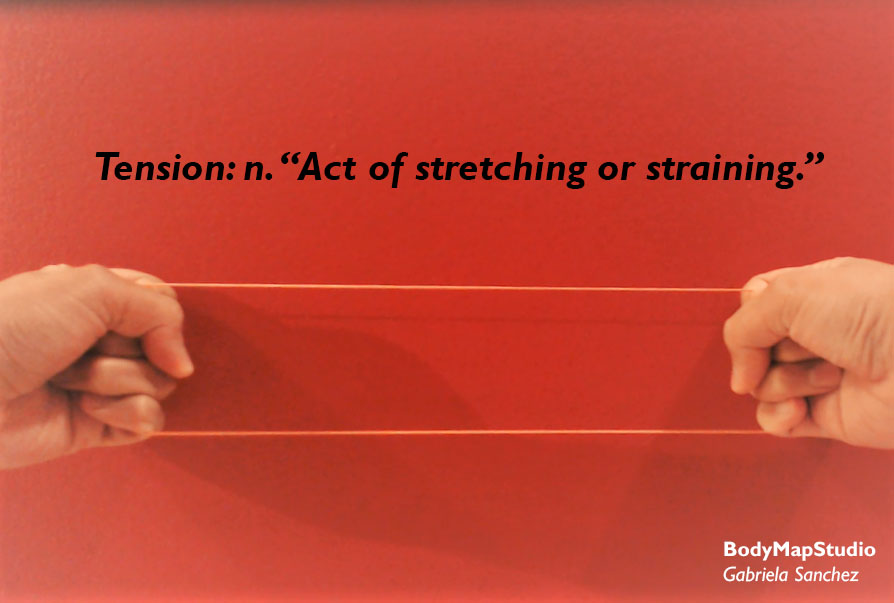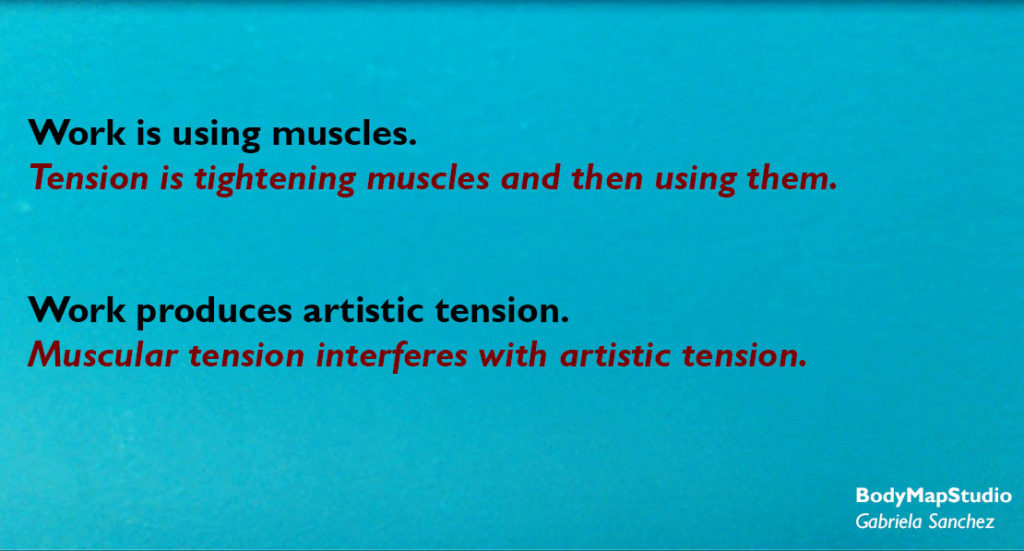A couple of weeks ago, I received an email from a colleague who expressed some of his concerns and questions. This is my answer which I wanted to share with everyone.
The message had two parts. The first is the issue between tension and relaxation concepts for learning to play an instrument. In the second part he asked some questions: How to unlearn wrong ideas? How to make a change in students’ ways of thinking so that they can learn to relax?
I will begin to answer the questions, and then I will use relaxation and tension as an example.
How to encourage new ways of thinking?
This question is so interesting because it points out what Body Mapping is.
The basis for Body Mapping is to change the way we learn to play music. It is about breaking ideas, myths, and patterns which we have learned in music and incorporate topics that haven’t been discussed, like body awareness. For doing this we need interest, will and a certain “rebellion” against the structures that we have followed for years.
In Body Mapping changes begin by recognizing the misconceptions (mis-mapings) and transforming them with accurate information.
I have already discussed an example of this before when I talked about our perception of the wrists. Understanding this mis-mapping example may seem like something simple, but if you learn accurate information about your body, have an experience of it, and relate it to playing, you will change your ideas. The reason to start doing Body Mapping is to avoid tension, pain, etc. while playing; changing the way of thinking and transforming ideas is a fundamental part in the process. This is achieved by developing attention and self-observation.
As teachers, we can encourage students and colleagues to start developing a different approach in musical education through new information. Body Mapping is an option and can be applied in your music lessons. Over time, it can become your style of teaching.
So my suggestion to renew patterns, ideas, and beliefs —related to physical tension in music practice— and help your students, is to immerse yourself in this practice and promote it.
You can start today
Another important factor to change the perception of our bodies is to discover fixed misconceptions that are in our culture that affect us.
Tension and relaxation are words that we use often and are concepts that have been used for generations in music education.

Usually, we identify tension and relaxation as opposites, but in the living body they are similar.
Relaxation
When we say “play with a relaxed posture” we can create confusion. To be relaxed is a vague concept.
Sometimes advertisements, and other sources that may or may not be related to music, present the idea of relaxation as an experience of comfort. For example, being on the beach and lying down, things that also suggest the absence of activity.
So, how can we include this state in a class or rehearsal? How can we find this experience in our body while playing?
Sometimes while acting relaxed the effect is that the body collapses. It starts with the spine, then many compensations throughout the body follow in the pelvis, neck, arms, etc. which generates tension in the muscles and pressure in the joints!
In Body Mapping we don’t want to reinforce an unclear concept and so we avoid using it.
Body Mapping uses words like balance to teach you how to distinguish in your body the appropriate work to play without hurting yourself.
So, an opportunity to change a pattern is to avoid saying “relax.” Instead, develop body awareness and learn to identify the amount of work needed for each activity.

I invite you to write me your questions, we can create the content of the blog together!
Work cited:
Conable, B. (2000). What every musician needs to know about the body: The practical application of Body Mapping to making music. Portland, Oregon: Andover Press.